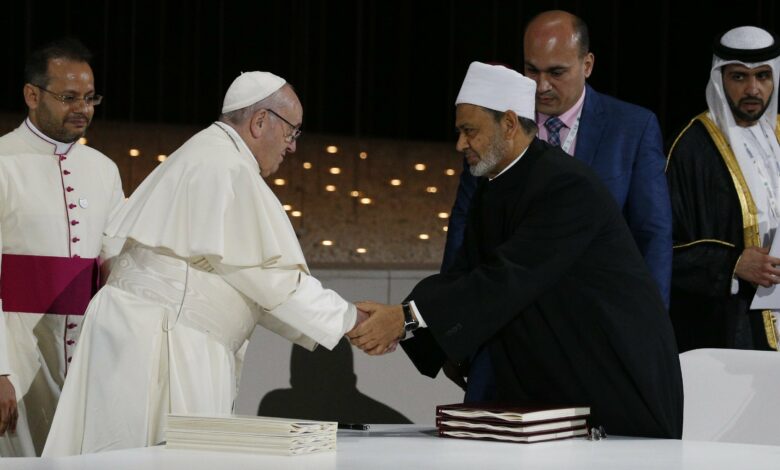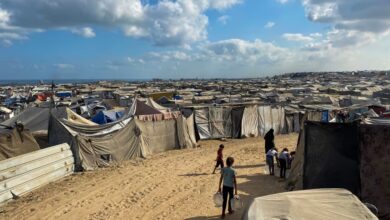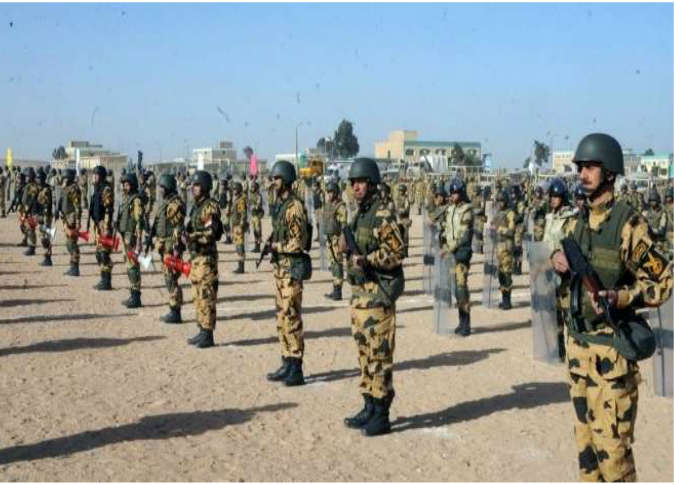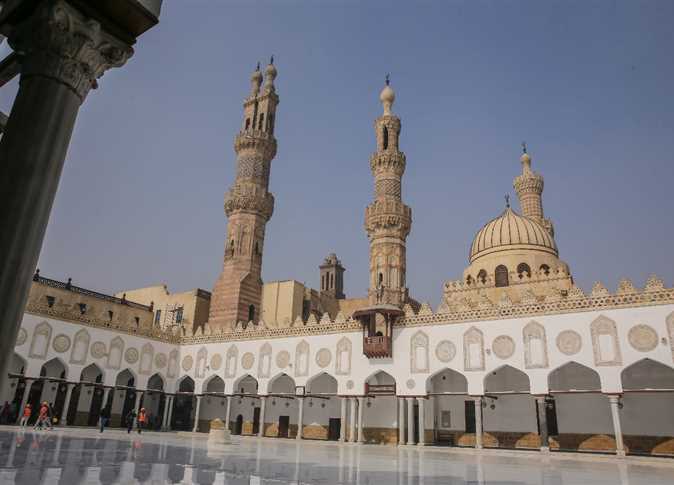
As president of Al-Azhar University, I was honored to attend some of the meetings between Professor Ahmed El-Tayeb, Grand Imam of Al-Azhar, and Pope Francis, Pontiff of the Catholic Church.
This period included the meeting in which the idea of the Human Fraternity Document was put forward, the historic summit in Abu Dhabi, during which the document was signed, and finally, the sixth summit in Rome.
These meetings bristled with rich discussions of diverse humanitarian issues. They abounded with lasting memories, interactions, and sincere sentiments between the two leading figures who worked together through their true determination to save humanity from besetting dilemmas and tragedies.
I thought a lot about documenting these memories because of: first, my firm belief that religious scholars, intellectuals, and readers should know the details of such historic events, acknowledge its surrounding sentiments, and recognize the causes and whereabouts that led to the signing of such a landmark document. Through this, they would realize the significance of such a document for the world today and in the future.
Second, I thought of documenting these memories because they impressed me so much on a personal level, both humanely and intellectually.
Since I got distracted from the task with university responsibilities, I was happily surprised when I received a gift from my dear brother and friend, Judge Mohamed Abdelsalam, secretary-general of the Higher Committee of Human Fraternity, in the form of a book that realizes my dream and even more.
He even did more than I could do, given that I only attended some of the meetings between the Grand Imam and the Pope. At the same time, Judge Abdelsalam was a witness to all of their meetings in a way that entitled him to document these memories, knowing that he is gifted in his sincere sentiments, surging emotions, and remarkable unbiased professionalism. He thus managed to communicate the details of such meetings to the readers’ minds and hearts.
The book, which is a testament to the birth of the Human Fraternity Document, is at the same time a chronicle of many events preceding the signing event. It is also adequately produced professionally and historically.
Thus it may serve as a modern documentation of the relationship between Al-Azhar and the Vatican, and even between Islam and Christianity. The author conveyed events honestly and delineated facts objectively, without missing the key intellectual issues of interest for the reader, all in a wonderful way that combines scholarly accuracy and smoothness of style.
The book is also distinguished in its language and refined literary style, in addition to its graceful presentation and coherent flow of narration that is sustained by corroborating sources and images.
The beautiful thing about the book is that it gives everyone their due, as the author registers the effort of Father Younes Lahzi, translator and former personal secretary to the Pope, Mohamed Khalifa Al Mubarak, chairman of the Department of Culture and Tourism–Abu Dhabi, Dr. Sultan Faisal Al Rumeithi, secretary-general of the Council of Muslim Elders, Mr. Yasser Harib, the Emirati writer and media figure, and many others who contributed to the success along such “thorny path.”
Judge Abdelsalam did not forget to mention the efforts of the Community of Sant’Egidio, the various foreign ministries, specifically of Egypt and the UAE, the ambassadors, the members of Al-Azhar’s Council of Senior Scholars and the Council of Muslim Elders, and late scholar Prof. Mahmoud Hamdi Zaqzouq.
He even recognized the efforts of his team of young people whom he likes to call the “Special Task Force” in a way that indicates a sound instinct and a confident self in appreciatively giving everyone their due credit.
It should be noted here that I had the honor to attend the luncheon at the Pope’s house, during which my brother Judge Abdelsalam proposed the idea of the document I witnessed for myself the interest of His Eminence the Grand Imam and His Holiness the Pope in the initiative and their determination to implement it.
Yet, this seminal book enlightened me more about Pope Francis’ personality, humaneness, and tolerance and how he – as the Grand Imam calls him – is a man of peace par excellence.
It also illustrates the significant role His Highness Sheikh Mohammed bin Zayed, Crown Prince of Abu Dhabi, has played and continues to play and how he is – as the author calls him – the patron of human fraternity, for his unwavering support for this project and his sincere efforts in the service of humanity.
In conclusion, and as a university professor preoccupied with research and study, I see in this book a valuable scholarly treasure. I invite all humanities students and researchers to benefit from it, especially that this research field still needs more sincere academic efforts from us all for the good of humanity.
___
IMAGE: Pope Francis shakes hands with Sheik Ahmed El-Tayeb, grand imam of Egypt’s al-Azhar mosque and university, during a document signing at an interreligious meeting at the Founder’s Memorial in Abu Dhabi, United Arab Emirates, in this February 4, 2019, file photo.




